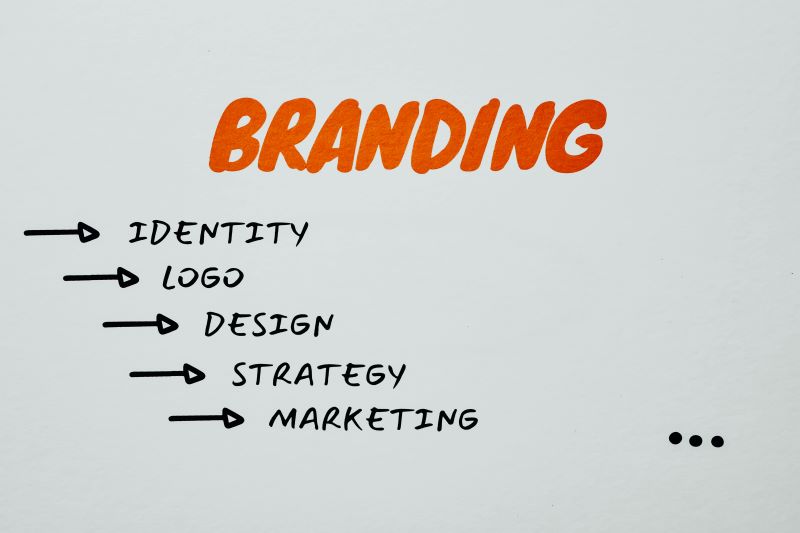Building a Strong Brand: Strategies for Small Business Owners to Create a Unique and Memorable Identity
In the competitive world of small businesses, standing out is essential. With so many companies vying for attention, having a strong and recognizable brand can be the difference between success and obscurity. A brand is more than just a logo or a catchy slogan; it’s the personality, values, and promise you offer your customers. It shapes how people perceive your business and can influence their purchasing decisions.
Building a strong brand is a process that takes time, creativity, and strategic thinking. But with the right approach, small business owners can create a unique and memorable brand identity that resonates with customers and fosters loyalty. Here are some effective strategies to help you build a strong brand for your small business.
1. Define Your Brand’s Purpose and Values
Before you can begin creating a brand, you need to understand why your business exists and what it stands for. Your brand’s purpose and values are the foundation of your identity. Think about the mission of your business and the problems you’re solving for your customers.
Ask yourself:
- What makes your business different from others in the market?
- What values drive your business decisions and actions?
- How do you want your customers to feel when they interact with your brand?
Your brand should reflect your core values and communicate your unique story. Whether it’s providing exceptional customer service, supporting sustainability, or offering innovative solutions, make sure your purpose is clear and consistent in every interaction with your audience.
2. Understand Your Target Audience
A successful brand speaks directly to the people it serves. To create a brand identity that resonates, you need to deeply understand your target audience. What are their needs, desires, and pain points? What do they care about? What kind of language and tone do they respond to?
Conduct market research, surveys, or focus groups to get to know your audience better. The more you know about your ideal customers, the easier it will be to craft a brand identity that appeals to them. A well-defined target audience will help you tailor your messaging, design, and overall approach, ensuring that your brand feels personal and relevant.
3. Create a Memorable Logo and Visual Identity
Visual identity is a key element of brand recognition. Your logo is often the first thing people associate with your business, so it needs to be distinctive and aligned with your brand’s values and personality. Whether you’re going for a sleek and modern design, a playful and quirky look, or something timeless and classic, make sure your logo stands out and communicates the right message.
Beyond the logo, your visual identity includes your color palette, typography, website design, social media presence, and packaging. Consistency is crucial here. Using the same color scheme, fonts, and imagery across all platforms and materials helps reinforce your brand and makes it easier for customers to recognize and remember you.
4. Craft a Distinctive Brand Voice and Messaging
The way you communicate with your customers is just as important as how you look. Your brand voice should reflect your business’s personality and resonate with your audience. Whether your tone is formal, casual, humorous, or authoritative, consistency is key.
Think about the language you use in your website copy, emails, social media posts, and advertisements. Do you want to come across as friendly and approachable, or more professional and polished? Define your brand’s voice and ensure it remains consistent across all communication channels.
Your messaging should also focus on the benefits you offer to your customers. Don’t just talk about your products or services—explain how they solve a problem or improve your customers’ lives. Craft a clear and compelling brand story that highlights your mission and the value you provide.
5. Provide an Exceptional Customer Experience
Branding isn’t just about how you look or sound; it’s about the experience you provide to your customers. The way people feel when they interact with your business directly impacts their perception of your brand. A positive customer experience can turn first-time buyers into loyal advocates, while a negative one can damage your reputation.
Focus on creating a seamless and enjoyable experience at every touchpoint, from the first website visit to after-sales support. Train your staff to deliver excellent customer service, make your processes as easy and efficient as possible, and always go the extra mile to meet or exceed expectations. Word-of-mouth referrals and repeat business are often driven by an outstanding customer experience.
6. Be Authentic and Stay True to Your Brand
In today’s market, consumers value authenticity more than ever. People want to support businesses that are genuine and transparent, so it’s important to stay true to your brand’s values and mission. Avoid trying to be something you’re not or chasing trends that don’t align with your business identity.
Authenticity builds trust with your customers, and trust is the foundation of brand loyalty. Don’t be afraid to show the human side of your business—share your story, your struggles, and your successes. When customers feel connected to your brand on a deeper level, they’re more likely to become lifelong supporters.
7. Engage on Social Media and Build a Community
Social media offers an incredible opportunity to connect with your audience and build brand awareness. Use platforms like Instagram, Facebook, LinkedIn, and Twitter to showcase your brand’s personality, share valuable content, and interact with customers.
Engagement is key. Respond to comments, ask questions, and share user-generated content. Building a community around your brand helps foster stronger relationships with your customers and creates a sense of belonging. When customers feel like they’re part of something bigger, they’re more likely to become brand advocates and spread the word.
8. Be Consistent Across All Channels
Consistency is one of the most important elements of building a strong brand. Your logo, messaging, tone, and overall brand identity should remain consistent across all channels, both online and offline. Whether someone is visiting your website, browsing your social media, or interacting with your staff in person, their experience should feel cohesive.
Consistency builds recognition and trust, making it easier for your customers to identify and remember your brand. It also reinforces your business values and promises, ensuring that every interaction with your brand is a positive one.
9. Monitor Your Brand’s Performance and Evolve Over Time
Building a strong brand is an ongoing process. As your business grows and evolves, so should your brand. Regularly assess how your brand is performing—how customers perceive it, how it’s resonating with your target audience, and whether it’s helping you achieve your business goals.
Be open to feedback and willing to make adjustments when necessary. A strong brand doesn’t remain static; it adapts to changes in the market, trends, and customer preferences. Stay flexible, and continue refining your brand to ensure it remains fresh, relevant, and impactful.
Conclusion
Creating a unique and memorable brand identity is essential for standing out in a crowded market. By defining your purpose, understanding your audience, crafting a distinctive visual identity, and providing an exceptional customer experience, you can build a brand that resonates with customers and sets you apart from the competition. Remember, your brand is more than just a logo—it’s the entire experience and promise you offer. With consistent effort and strategic thinking, you can create a strong brand that grows with your business and drives long-term success.





